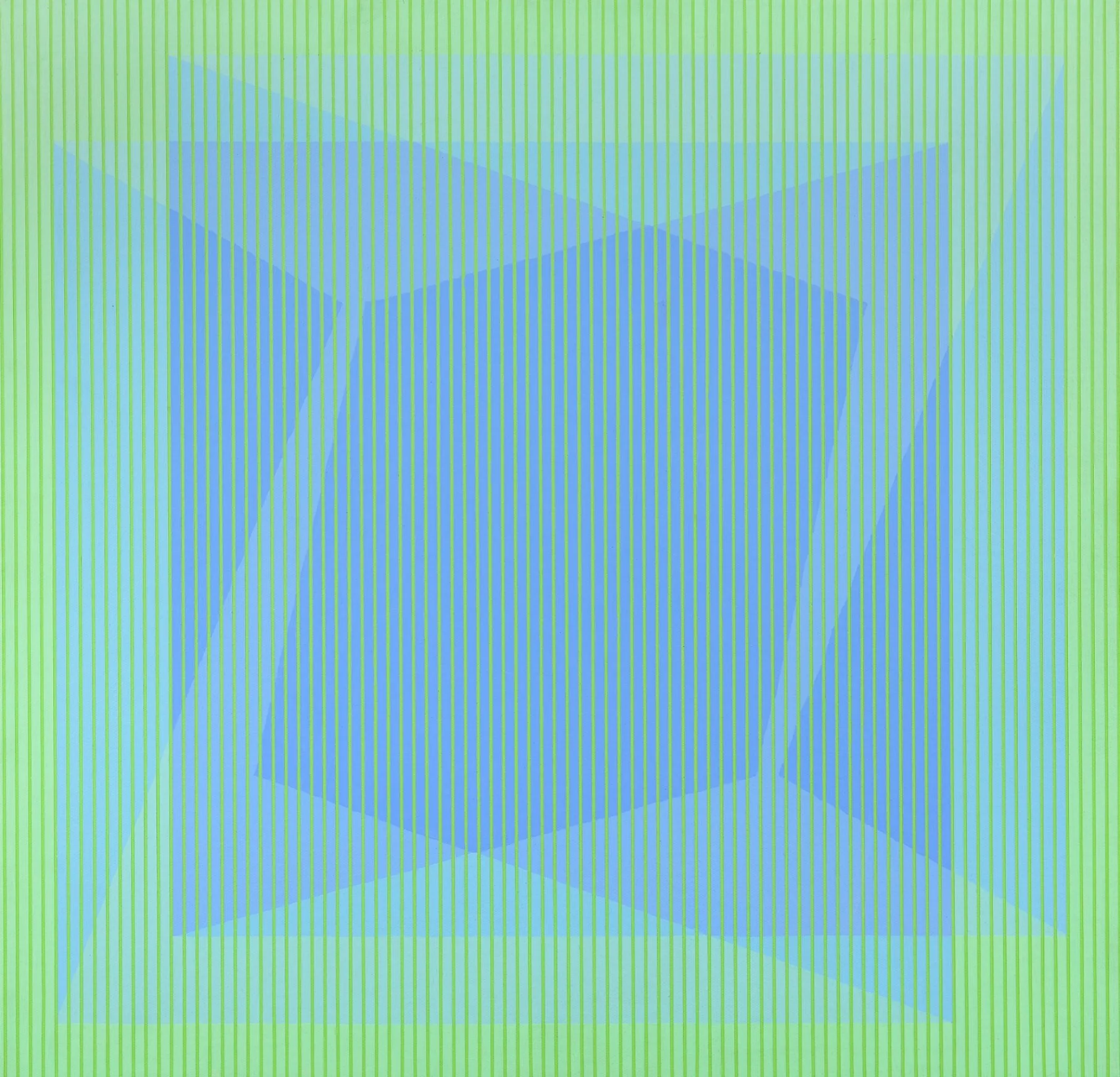Chromatic Fold/ Green, blue by Julian Stanczak


Chromatic Fold/ Green, blue by Julian Stanczak
A pioneer in the perceptual art movement, painter Julian Stanczak built his life around seeking answers to questions about color, light, form and the way the expression of those things affected the human eye and emotions.
Over the decades, Stanczak delved deeply into studies of light waves and the effects that colors had on each other in juxtaposition. With help from his father-in-law, he built a machine to cut rolls of tape to any width so he could mask off portions of his canvases to achieve edge precision. His studio was a festival of colors mixed with great care, allowing him as much control as possible over the experience of light and feeling on the part of the viewer.
DIMENSIONS: (unframed) 55.9 x 55.9 cm/22.0 x 22.0 ins
SIGNATURE: Signed (verso)
MEDIUM: Acrylic and collage on canvas
Price: £60,000
A leading artist of Op Art, Stanczak created from the 1960s a dynamic and joyous oeuvre. The term Op Art itself was coined by The Times after his first major show, Julian Stanczak: Optical Paintings, held at the Martha Jackson Gallery in New York, 1964 where his paintings, full of colour and optimism, gave nothing of his traumatic childhood.
Stanczak deployed repeating forms to create compositions that are manifestations of his visual experiences. Stanczak’s work is an art of experience, and is based upon structures of color. In the 1980s and 1990s Stanczak retained his geometric structure and created compositions with bright or muted colors.
Provenance
Private Collection, New York
Biography
Julian Stanczak was a Polish-born American painter best known for his contribution to the Op Art movement. Using vibratory lines and complimentary color schemes, he created sophisticated optical effects. Similar to the works of Bridget Riley and Richard Anuszkiewicz; his precise geometric elements are blurred by layers of transparent color. “The primary drive of colors is to give birth to light. But light always changes; it is evasive,” he once said. “I use the energy of this flux because it offers me great plasticity of action on the canvas.” Born on Novemeber 5, 1928 in Borownica, Poland, he contracted encephalitis in a Siberian work camp at a young age, permanently damaging his right arm. Escaping at age 14, with his right arm no longer functioning, the artist learned to paint with his left hand. After World War II, Stanczak traveled to London, before emigrating to Cleveland, OH in 1950. He received his BFA from the Cleveland Art Institute and his MFA from the Yale University School of Art in 1956. Later, the artist taught painting at the Art Academy of Cincinnati between 1957–1964, and at the Cleveland Institute of Art from 1964–1995. His students included artists April Gornik and Dana Schutz. The artist died on March 25, 2017 in Seven Hills, OH. His works are in the collections of the Art Institute of Chicago, The Museum of Modern Art in New York, the Carnegie Museum of Art in Pittsburgh, the National Gallery of Art in Washington, D.C., and the Museum of Fine Arts in Boston.